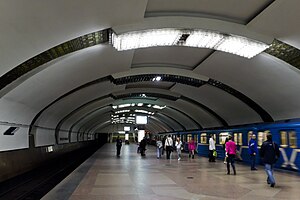.mw-parser-output .hidden-begin{box-sizing:border-box;width:100%;padding:5px;border:none;font-size:95%}.mw-parser-output .hidden-title{font-weight:bold;line-height:1.6;text-align:left}.mw-parser-output .hidden-content{text-align:left}@media all and (max-width:500px){.mw-parser-output .hidden-begin{width:auto!important;clear:none!important;float:none!important))You can help expand this article with text translated from the corresponding article in Russian. (December 2022) Click [show] for important translation instructions.
Machine translation, like DeepL or Google Translate, is a useful starting point for translations, but translators must revise errors as necessary and confirm that the translation is accurate, rather than simply copy-pasting machine-translated text into the English Wikipedia.
Do not translate text that appears unreliable or low-quality. If possible, verify the text with references provided in the foreign-language article.
You must provide copyright attribution in the edit summary accompanying your translation by providing an interlanguage link to the source of your translation. A model attribution edit summary is Content in this edit is translated from the existing Russian Wikipedia article at [[:ru:Институт культуры (станция метро)]]; see its history for attribution.
You may also add the template ((Translated|ru|Институт культуры (станция метро))) to the talk page.
For more guidance, see Wikipedia:Translation.
You can help expand this article with text translated from the corresponding article in Belarusian. (December 2022) Click [show] for important translation instructions.
Machine translation, like DeepL or Google Translate, is a useful starting point for translations, but translators must revise errors as necessary and confirm that the translation is accurate, rather than simply copy-pasting machine-translated text into the English Wikipedia.
Do not translate text that appears unreliable or low-quality. If possible, verify the text with references provided in the foreign-language article.
You must provide copyright attribution in the edit summary accompanying your translation by providing an interlanguage link to the source of your translation. A model attribution edit summary is Content in this edit is translated from the existing Belarusian Wikipedia article at [[:be:Інстытут культуры (станцыя метро, Мінск)]]; see its history for attribution.
You may also add the template ((Translated|be|Інстытут культуры (станцыя метро, Мінск))) to the talk page.
For more guidance, see Wikipedia:Translation.
Instytut Kultury Інстытут Культуры | |||||||||||
|---|---|---|---|---|---|---|---|---|---|---|---|
 | |||||||||||
| General information | |||||||||||
| Coordinates | 53°53′10″N 27°32′16″E / 53.88611°N 27.53778°E | ||||||||||
| Owned by | Minsk Metro | ||||||||||
| Line(s) | |||||||||||
| Platforms | 1 island platform | ||||||||||
| Tracks | 2 | ||||||||||
| Construction | |||||||||||
| Structure type | Underground | ||||||||||
| Other information | |||||||||||
| Station code | 114 | ||||||||||
| History | |||||||||||
| Opened | 26 June 1984 | ||||||||||
| Services | |||||||||||
| |||||||||||
| |||||||||||
Instytut Kultury (Belarusian: Інстытут Культуры [instɨˈtut kulʲˈturɨ]; Russian: институт Культуры; lit. 'Institute of Culture') is a station of the Minsk Metro.
Instytut Kultury station has been opened on 26 June 1984, in the first stage of the Minsk Metro. Until November 2012, this was the southwestern terminus on the Maskowskaya line. This station is between Ploshcha Lyenina and Hrušaŭka stations.[1]
This station is of the vaulted type, made from monolithic and precast concrete.
Exits of this station lead to trains to Orsha, Academy of Public Administration under the aegis of the President of the Republic of Belarus and Belarusian University of Culture.





